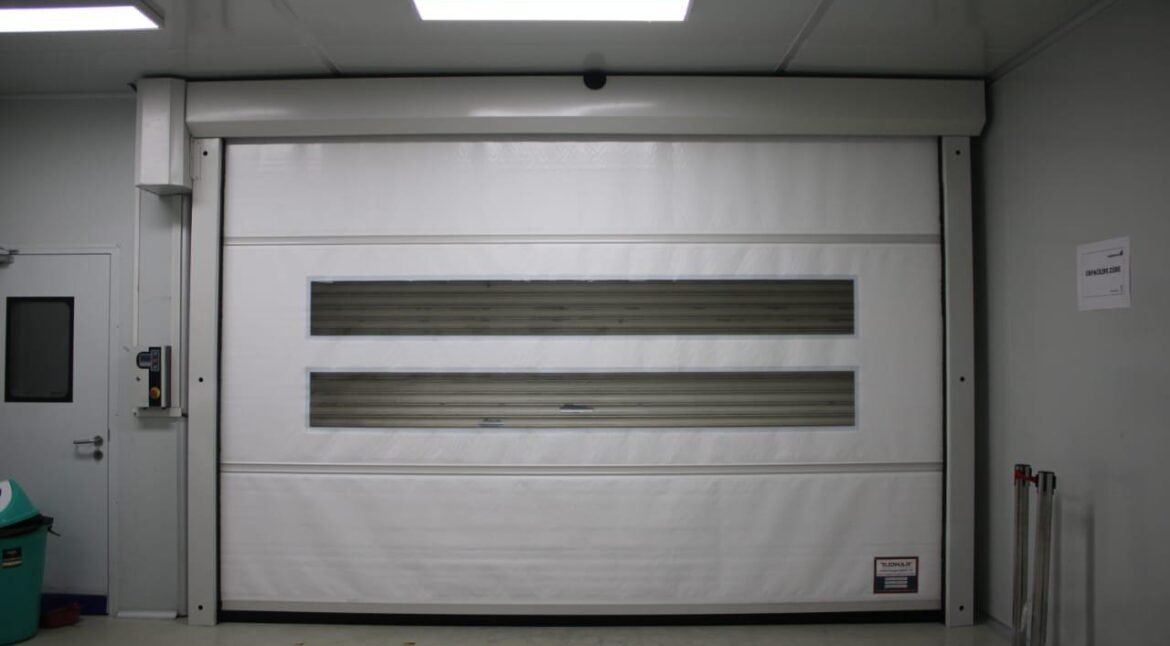External Roll-Up Doors
What Is an External Roll-Up Door?
External Roll-Up Doors
External Roll-Up Doors An external roll-up door is a door system designed to roll vertically into a compact coil above an entryway. Rather than swinging out or sliding sideways, the door simply rises and disappears into a barrel mechanism installed overhead.
These doors are typically made from interlocking metal slats (steel or aluminum), or heavy-duty fabric in some high-speed models. Their compact design makes them ideal for areas where space is limited or where frequent opening and closing is required.
Where Are They Used?
You’ll find external roll-up doors in a wide range of settings:
- Warehouses & Logistics Hubs
- Retail Stores
- Garages & Workshops
- Loading Docks
- Storage Units
- Agricultural Facilities
- Even Modern Residences (for security and aesthetics)
Top Benefits of External Roll-Up Doors
✅ Space Saving
Since the door rolls upward, it frees up valuable floor and wall space, both inside and outside the building.
✅ High Security
Built with durable materials and locking systems, these doors provide strong resistance against forced entry and vandalism—especially important in busy urban centers like Delhi.
✅ Weather Protection
When fully closed, the door forms a tight seal that guards against wind, rain, dust, and pollution—helping protect valuable inventory or equipment inside.
✅ Durability & Low Maintenance
Made from galvanized steel, aluminum, or PVC, these doors are built to withstand rough use, extreme weather, and time—requiring minimal servicing.
✅ Operational Efficiency
Most modern roll-up doors are motorized, allowing for fast, push-button operation. This improves workflow in high-traffic areas like loading zones or warehouses.
✅ Energy Efficiency
Insulated roll-up doors help maintain internal temperature, cutting heating and cooling costs—especially useful for temperature-sensitive storage.
How Do External Roll-Up Doors Work?
The mechanism is simple yet effective:
- Curtain – The door surface, made of slats or reinforced fabric.
- Tracks – Vertical rails that guide the door as it rolls up or down.
- Barrel/Drum – Located above the door, it rolls the curtain into a compact coil.
- Motor or Manual Operator – Electric motors automate the process; some models include chain hoists or cranks for manual operation.
- Springs – Often used to balance the weight and reduce wear on the motor.
Different Types of External Roll-Up Doors
🔹 Standard Service Doors
Robust and secure, ideal for industrial and commercial settings.
🔹 Security Grilles
Open-style designs that provide visibility and airflow, perfect for shopfronts after hours.
🔹 Fire-Rated Doors
Designed to resist fire spread, common in manufacturing and warehouse environments.
🔹 High-Speed Roll-Up Doors
Fabric-based doors built for rapid operation—ideal for environments with continuous traffic.
🔹 Insulated Roll-Up Doors
Feature internal insulation for temperature and energy control.
What’s Next for Roll-Up Door Technology?
In 2025 and beyond, we’re seeing increasing adoption of:
- Smart Controls integrated with building automation systems
- Advanced safety features (obstacle sensors, auto-reverse, emergency stops)
- Stronger materials that reduce noise, increase energy efficiency, and improve insulation
As urban spaces grow denser and operational efficiency becomes vital, external roll-up doors are proving themselves as more than just a barrier—they are a smart investment in convenience, safety, and space management.
Final Thoughts
Whether you’re a business owner in Delhi, a warehouse manager, or a builder planning your next commercial site, an external roll-up door offers space-saving security, weather protection, and long-term value.
So next time you walk past a seemingly simple shutter, remember: behind that roll-up door is a quiet powerhouse, working every day to keep people, products, and places safe and efficient.



